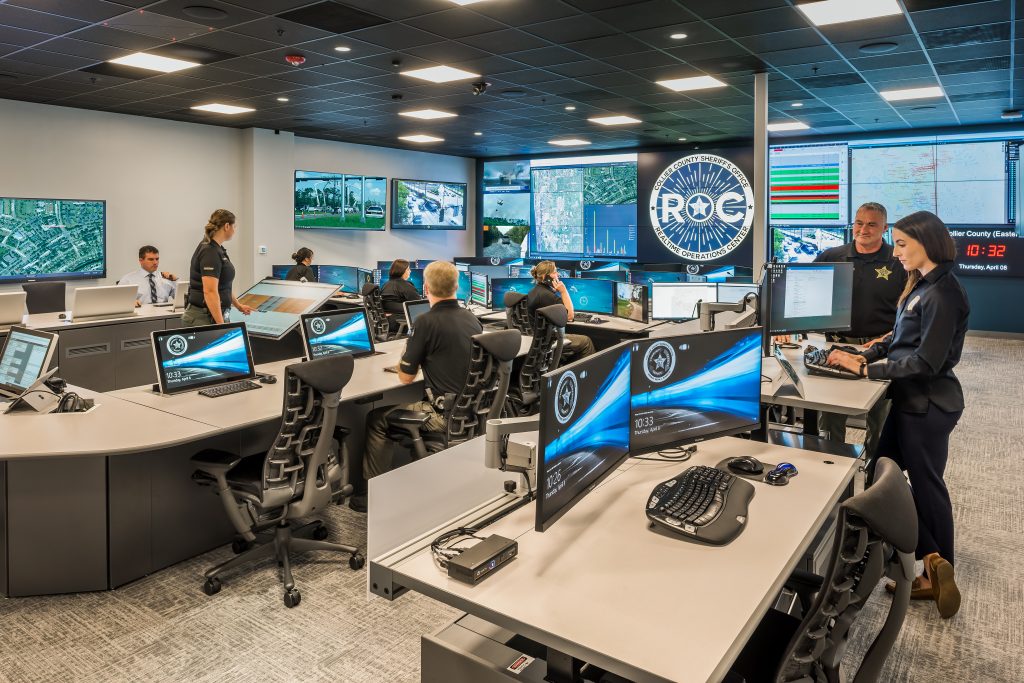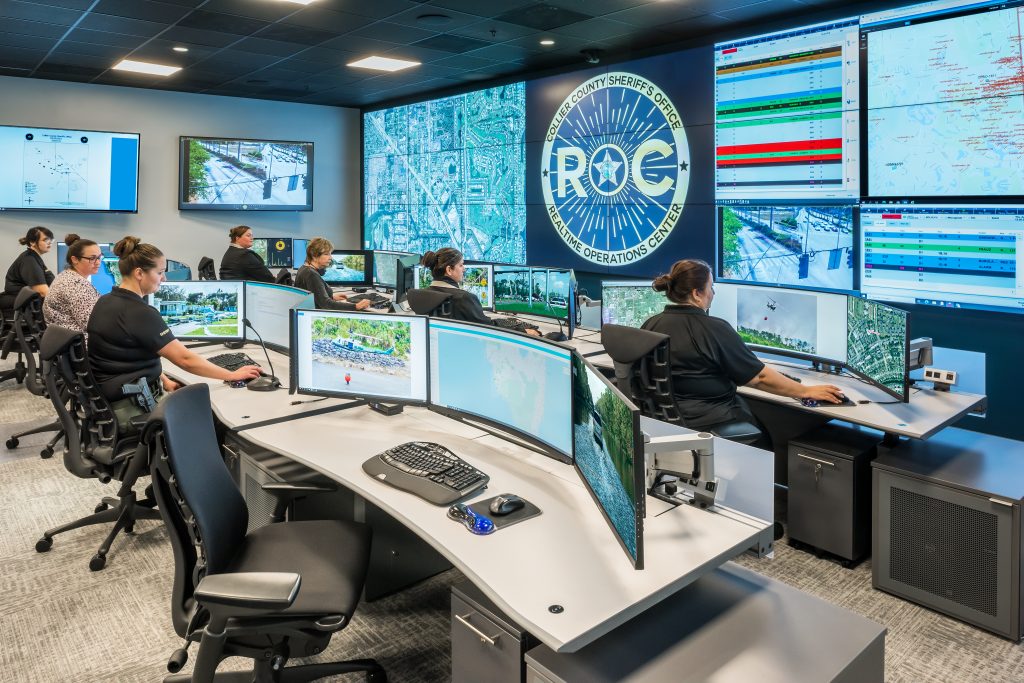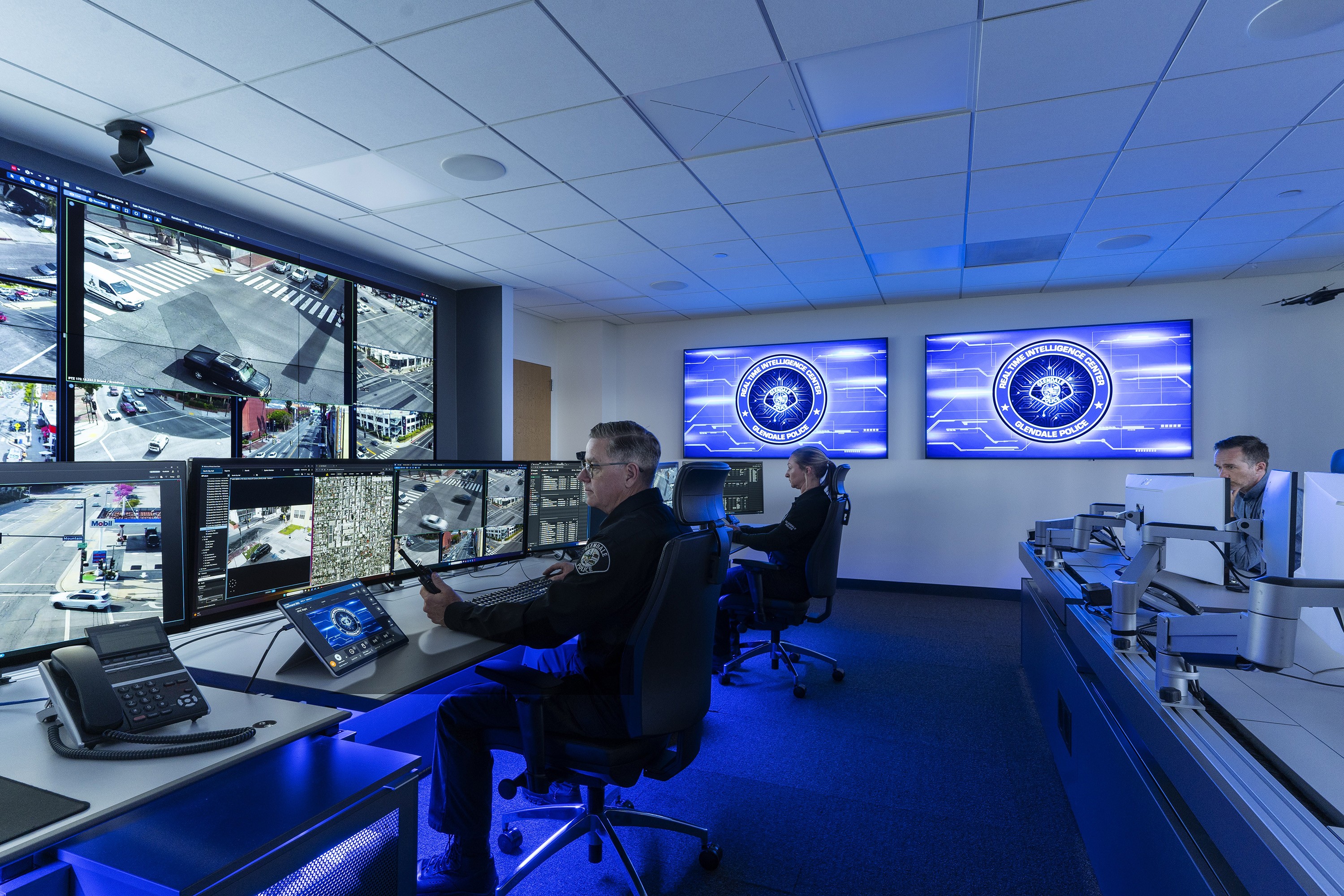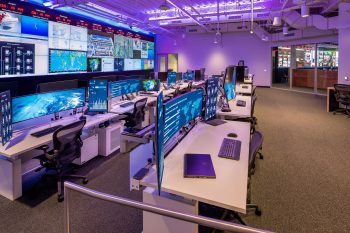Drone as First Responder (DFR) programs were first launched in 2018 and have quickly grown in their adoption and effectiveness. When integrated into Real-Time Operations Centers (ROCs), these programs offer a strategic advantage. By breaking down departmental silos and increasing situational awareness, agencies can coordinate faster, more unified responses that improve public safety outcomes.
The Role of Drones in Public Safety
From monitoring active crime scenes to conducting search-and-rescue operations, drones go where fixed cameras and ground units cannot. In a reactive capacity, real-time aerial footage translates to valuable information that, when delivered to responding units, enables more informed decision-making. Proactively, they support event surveillance and disaster management by identifying risks before they escalate.
The return on investment (ROI) for DFR programs is well-documented. Data from early DFR programs showed that roughly 24% of 911 calls for service were resolved without the need to dispatch officers. Police drones also cost a fraction of helicopters, reduce overtime among overworked agencies, and free up valuable resources.

When integrated into public safety command centers, drones strengthen situational awareness and improve coordination across units. Lt. (Retired) Sean Arthur, who previously served as the Real-Time Operations Center project manager at the Collier County Sheriff’s Office and now works as a Public Safety Specialist at Constant Technologies, has experienced this firsthand.
“DFR improves officer safety. There is not just one set of eyes; there is a room of analysts and certified officers watching in real time. Instead of pulling a deputy off the road, we could launch a drone, get eyes on the scene, and start relaying critical updates to units in the field. In one case, the drone picked up a suspect leaving the area before anyone was on scene. That allowed us to set up a perimeter and coordinate the response directly from the ROC.”
Key Components of a DFR Program
Though requirements may change, below are some of the current requirements to launch a successful DFR program:
- Waiver: Part 107 waivers are issued by the Federal Aviation Administration (FAA) and are required for public safety agencies launching a DFR program.
- Certified Operator: Drone operators are required to hold a Part 107 certification, which involves passing a written exam on airspace rules, safety, and procedures.
- Drone: There are many models available, each with unique capabilities, including thermal imaging, zoom capabilities, and more.
- Software: Drone software enables live-stream capabilities, geofencing, and Computer-Aided Dispatch (CAD) system integration required for DFR programs.
- Operations Center Integration: A reliable link to a ROC is essential for coordinating drone launches, sharing information, and responding quickly to unfolding events.
How to Integrate Drones into Your Operations Center
There is no single blueprint to follow when integrating drones into your ROC, but it starts by identifying which outcomes an agency would like to achieve. From there, agencies can design a workflow around the mission.
For example, when an emergency call comes in, it is entered into a CAD system. If it matches predetermined criteria, a drone pilot will remotely initiate the drone launch. Meanwhile, analysts in the ROC begin pulling relevant data such as traffic camera footage, subject workups, maps, etc. The operator then communicates directly with dispatch and responding units to provide live updates. This activity is coordinated through shared workstations and a central video wall, enabling the entire ROC team to maintain a high degree of situational awareness.

As Billy Gessner, the ROC Technical Manager for the Collier County Sheriff’s Office, explains,
“A DFR isn’t something you can execute in isolation. The drone is one part of the solution. We had to build an entire ecosystem of software, infrastructure, and people to support it.”
That holistic approach helped make Collier County the first agency in Florida authorized to operate DFR missions beyond visual line of sight, setting a precedent for others across the state.
Constant Technologies: Your Partner in Command Center Integration
Is your agency looking to introduce a DFR into a new or existing operations center?
Constant Technologies designs and implements state-of-the-art operations centers tailored to each agency’s unique needs. With over 40 years of mission-critical operations center experience, Constant provides solutions that support a range of DFR integration models.
While some agencies prefer a separate room to minimize distractions and accommodate additional monitors, others benefit from a fully integrated workstation within the existing ROC. Whatever the setup, Constant provides the experience and flexibility to bring your vision to life.
From design and technology integration to training, Constant is ready to help your agency create a DFR program that fits seamlessly into your operations, improves public safety, and increases the effectiveness of first responders. Contact Constant’s team of experts today to get started with a no-cost design consultation.





